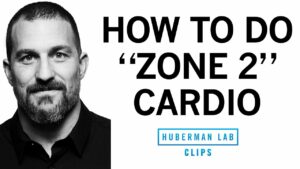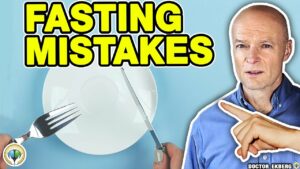In this video, Dr. Rena Malik, a urologist and pelvic surgeon, discusses how to naturally boost testosterone levels through exercise. She explains how testosterone is produced in the body and the role of the brain in stimulating testosterone production. Dr. Malik highlights the importance of intense workouts and the specific types of exercises that are most effective in increasing testosterone levels. Resistance training with large muscle groups and high intensity, performed with short resting periods and high volume, is recommended. She also discusses the impact of endurance training on testosterone levels and factors that can limit testosterone production, such as obesity and age. Overall, regular resistance exercises can significantly boost testosterone levels.

Our Summaries are written by our own AI Infrastructure, to save you time on your Health Journey!
Key Insights:
- Testosterone is primarily produced in the testicles by specialized cells called Leydig cells.
- The production of testosterone is stimulated by a hormone called gonadotropin-releasing hormone released by the hypothalamus in the brain.
- Exercise leads to an increase in testosterone levels by upregulating the expression of androgen receptors and promoting protein synthesis in muscle cells.
- Resistance training with high intensity and volume is the most effective way to boost testosterone levels.
- Endurance training can increase testosterone levels in the short term, but prolonged aerobic exercise can lead to increased cortisol levels, which inhibits testosterone production.
- Resistance exercises that use large muscle groups, such as squats and Olympic lifts, have a higher testosterone increase compared to exercises focusing on smaller muscle groups.
- Using free weights rather than machines during resistance training results in higher plasma testosterone levels.
- Shorter resting periods between sets during workouts can lead to better improvements in testosterone levels.
- Starting a workout with resistance training followed by endurance training can result in a greater and prolonged boost in testosterone levels.
- Regular resistance training can improve testosterone levels, but it may not have a lasting effect on basal testosterone levels unless combined with weight loss in obese individuals.
- Obesity and age can affect the body’s ability to produce testosterone, resulting in a reduced testosterone response.
- Regardless of age or other conditions, there is sufficient evidence that resistance exercises with large muscle mass and higher intensity can increase testosterone levels.
Transcript
How can you optimize your workout to boost your testosterone? I’m Dr. Rena Malik, urologist and pelvic surgeon, and today I’m going to tell you all we know about how to boost testosterone naturally through exercise. We will discuss how the body produces testosterone, how intense your workouts need to be, what kind of exercises you should do, and the order in which you should do them. We will also talk about the lasting effects on testosterone and factors that can limit your ability to produce more testosterone naturally.
So, how is testosterone made? 95% of the male body’s testosterone is produced in the testicles by specialized cells called Leydig cells. The signals to stimulate these cells start from the brain in the hypothalamus, which releases a hormone called gonadotropin-releasing hormone. This hormone causes the pituitary gland, another part of the brain, to release LH (luteinizing hormone). LH then sends signals to the Leydig cells of the testicles to produce testosterone. Testosterone goes to specific cells around the body, including muscles, where it binds to an androgen receptor. This binding triggers a cascade of gene production, leading to the synthesis of proteins and building blocks for the body.
How does exercise lead to increases in serum testosterone? When you exercise, there is a release of both catabolic and anabolic hormones – hormones that break you down and grow you up. One of these hormones is testosterone. The increase in testosterone upregulates the expression of the androgen receptor, leading to increases in protein synthesis. The theory is that after exercise, testosterone levels increase, which prolongs the half-life of the androgen receptor mRNA. This makes it more likely for hypertrophic adaptation, or muscle growth, to occur.
However, it’s important to note that there appears to be a threshold of metabolic demand or volume of work that needs to be achieved to get a testosterone boost. Let’s dive into the details:
Intensity of the Workout
Resistance training has been studied extensively to determine the intensity required for a testosterone boost. Intensity describes the difficulty of the exercise and is typically based on the amount of weight lifted. Repetition maximum (RM) is the maximum amount of weight you can lift for a specific number of movements. Volume of work, which is the key marker for testosterone boosting, includes the number of sets, repetitions, and intensity of the workout.
For example, if you start with 5 reps of 100 pounds and then progress to 5 reps of 150 pounds, you have increased the intensity. On the other hand, if you increase the volume by going from 5 reps of 100 pounds to 10 reps of 100 pounds, you have increased the number of sets and repetitions.
Studies have shown that three to five repetitions of three lower body exercises at 100% of the 6RM (repetition maximum) or five sets of ten repetitions at 10RM can boost testosterone levels. The key is to use your 100% repetition maximum weight for the entire set.
Endurance Training
Endurance training can also increase testosterone in the short term. Training for two to five minutes at 90-100% VO2 max (the maximum amount of oxygen your body can use during exercise) can lead to an initial increase in testosterone. However, prolonged aerobic exercise can release cortisol, which inhibits testosterone production. High-endurance athletes may even have lower testosterone levels due to the stress-induced release of reactive oxygen species.
Number of Sets and Repetitions
The volume of work is crucial for testosterone boosting. You can modify the number of sets and repetitions as long as the intensity remains high. The goal is to achieve the same amount of volume of work. Training to failure, where you exercise until you can’t lift anything anymore, may not be the best for testosterone levels. A study found that men who exercised but did not go to failure had lower cortisol concentrations and higher testosterone levels.
Type of Resistance Exercises
Resistance exercises that use large muscle groups and high intensity have been found to boost testosterone levels the most. Exercises like jump squats, which engage the lower extremities and core, can have a higher testosterone increase compared to exercises like bench press. Squats and Olympic lifts are also known to produce a higher increase in testosterone.
Resting Periods
The duration of rest between sets also plays a role in testosterone levels. Studies have shown that shorter resting periods, around 60 seconds compared to 90 seconds, can lead to better improvements in total testosterone levels.
Order of Exercise
When combining resistance and endurance training, it is best to start with resistance training using large muscle groups. This allows for a greater and prolonged boost in testosterone throughout the entire workout. Follow resistance training with endurance training.
Changes in Basal Testosterone Levels
Resistance training has shown to improve testosterone levels even with repeated bouts of exercise. However, regular exercise, regardless of type or intensity, does not seem to have a lasting effect on basal testosterone levels. Some studies have shown an increase in basal testosterone levels in obese individuals and older patients, possibly due to weight loss and fat loss.
Factors That Can Limit Testosterone Response
Factors like obesity and age can make it more difficult to boost testosterone levels. Obesity can cause endothelial dysfunction and vasodilation of blood vessels, which can affect blood flow to the testicles. Age also plays a role in testosterone production, with levels peaking around age 40 and gradually declining over time. While both obese and older individuals can still mount a response to exercise, it may not be as significant as in younger and leaner individuals.
Regardless of age or other conditions, there is sufficient evidence that resistance exercises with large muscle groups, using moderate to high intensity, with short resting periods and high volume can increase testosterone levels. So, get up and do some jump squats or resistance exercises to boost your testosterone levels. Remember, taking care of yourself is worth it.





